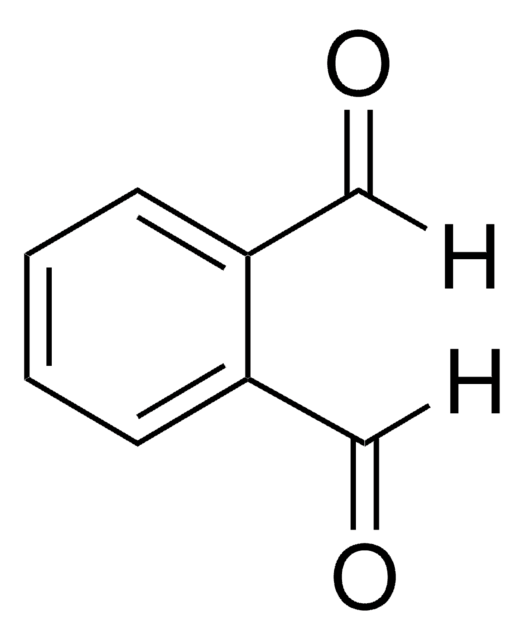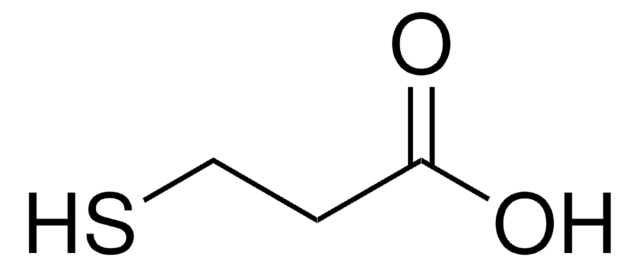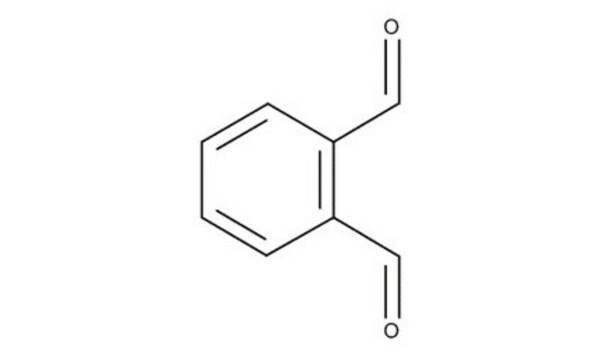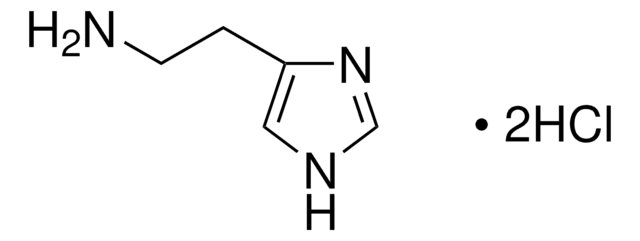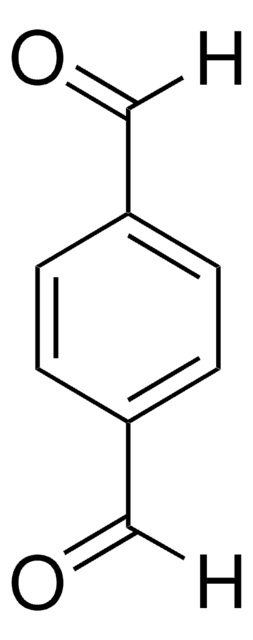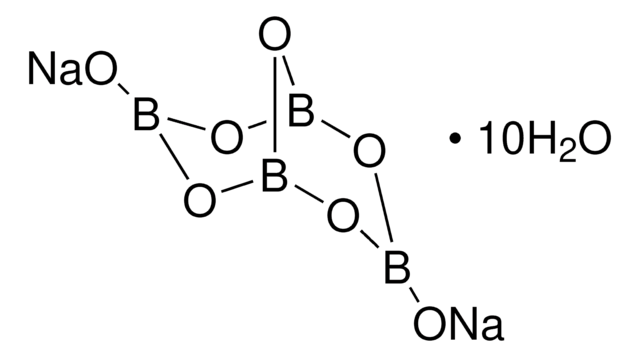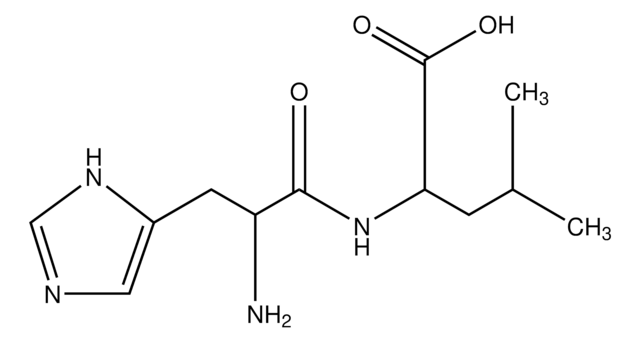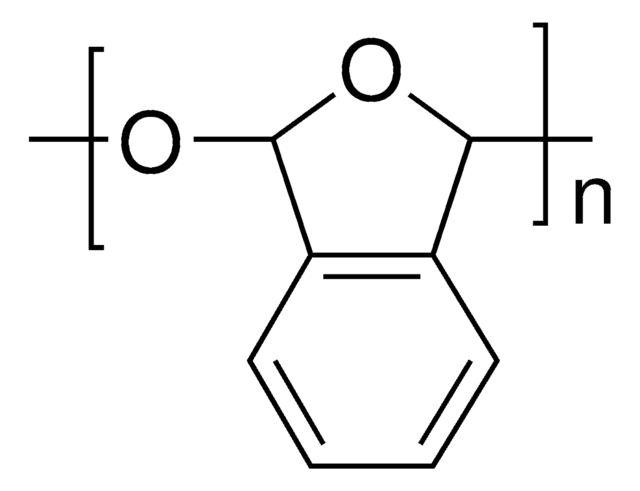Kluczowe dokumenty
P1378
Phthaldialdehyde
≥97% (HPLC), powder or crystals
Synonim(y):
o-Phthalaldehyde, o-Phthalic dicarboxaldehyde, Benzene-1,2-dicarboxaldehyde, OPA
About This Item
Polecane produkty
Poziom jakości
Próba
≥97% (HPLC)
Postać
powder or crystals
kolor
white to light yellow
mp
55-58 °C
temp. przechowywania
2-8°C
ciąg SMILES
O=Cc1ccccc1C=O
InChI
1S/C8H6O2/c9-5-7-3-1-2-4-8(7)6-10/h1-6H
Klucz InChI
ZWLUXSQADUDCSB-UHFFFAOYSA-N
Szukasz podobnych produktów? Odwiedź Przewodnik dotyczący porównywania produktów
Zastosowanie
- to detect Arg through spectrophotometry using end-point fluorescent sensitive detection
- as a reagent stream with the sample to produce a fluorescent product for determining ammonia in seawater
- in the o-phthaldialdehyde spectrophotometric assay (OPA test) to determine the proteolytic activity (PA)of the strains and the commercial cultures
Działania biochem./fizjol.
Hasło ostrzegawcze
Danger
Zwroty wskazujące rodzaj zagrożenia
Zwroty wskazujące środki ostrożności
Klasyfikacja zagrożeń
Acute Tox. 3 Oral - Aquatic Acute 1 - Aquatic Chronic 1 - Eye Dam. 1 - Skin Corr. 1B - Skin Sens. 1 - STOT SE 3
Organy docelowe
Respiratory system
Kod klasy składowania
6.1A - Combustible acute toxic Cat. 1 and 2 / very toxic hazardous materials
Klasa zagrożenia wodnego (WGK)
WGK 3
Temperatura zapłonu (°F)
269.6 °F - closed cup
Temperatura zapłonu (°C)
132 °C - closed cup
Środki ochrony indywidualnej
Faceshields, Gloves, Goggles, type ABEK (EN14387) respirator filter
Certyfikaty analizy (CoA)
Poszukaj Certyfikaty analizy (CoA), wpisując numer partii/serii produktów. Numery serii i partii można znaleźć na etykiecie produktu po słowach „seria” lub „partia”.
Masz już ten produkt?
Dokumenty związane z niedawno zakupionymi produktami zostały zamieszczone w Bibliotece dokumentów.
Klienci oglądali również te produkty
Nasz zespół naukowców ma doświadczenie we wszystkich obszarach badań, w tym w naukach przyrodniczych, materiałoznawstwie, syntezie chemicznej, chromatografii, analityce i wielu innych dziedzinach.
Skontaktuj się z zespołem ds. pomocy technicznej